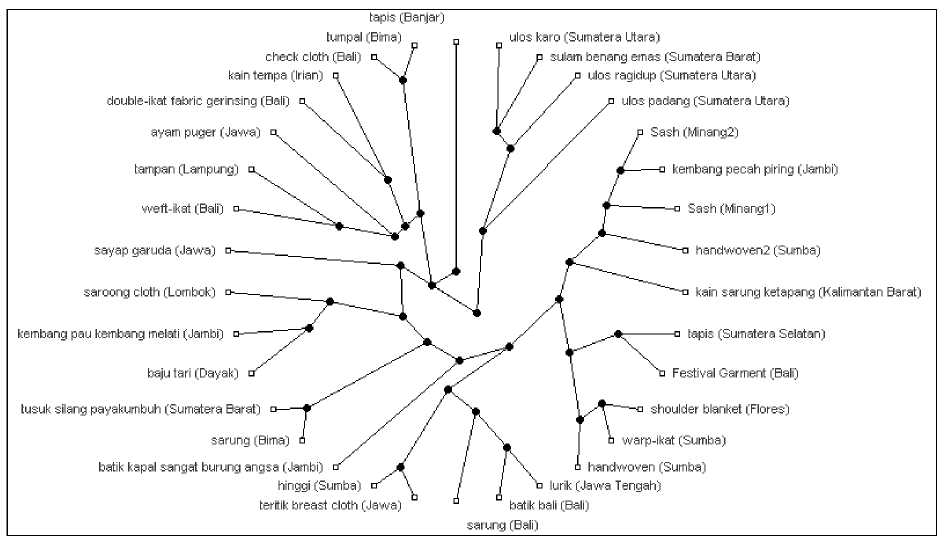designs that have been living through generations with Javanese people, the largest ethnic group in
Indonesian archipelago.

Figure 6
Radial representation of Indonesian ornamentations phylomemetic.
The similarities as well as diverse aspects of ornamentation as reflected in the artifacts has opened
an ajar door for further both anthropological (or sociological discussions) and aesthetics of
Indonesian people in general by incorporating the evolutionary terms of memetics. Further works on
more data including the contemporary work of arts can be conjectured to see how the visual
patterns could fit the meme of human social and cultural evolution.
Acknowledgement
I thank colleagues in Indonesian Archipelago Culture Initiatives (IACI) for helpful resources,
references, and data mining.
References:
[1] Acharya, T., Ray, A. K. (2005). Image Processing: Principles and Applications. Willey Inter-Science.
[2] Barnsley. M. F. (1988). Fractals Everywhere. Academic Press.
[3] Blackmore, S. (2001). "The meme's eye view". In Aunger, R. A. (eds.). Darwinizing Culture: The Status
of Memetics as a Science. Oxford UP.
[4] Doellah, H. S. (2002). Batik: The Impact of Time and Environment. Danar Hadi.
More intriguing information
1. The name is absent2. Tastes, castes, and culture: The influence of society on preferences
3. The name is absent
4. NVESTIGATING LEXICAL ACQUISITION PATTERNS: CONTEXT AND COGNITION
5. EU Preferential Partners in Search of New Policy Strategies for Agriculture: The Case of Citrus Sector in Trinidad and Tobago
6. Behavior-Based Early Language Development on a Humanoid Robot
7. THE CO-EVOLUTION OF MATTER AND CONSCIOUSNESS1
8. Epistemology and conceptual resources for the development of learning technologies
9. The name is absent
10. The name is absent